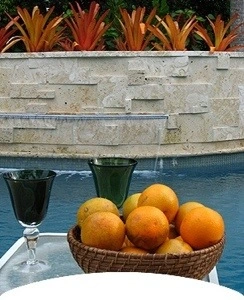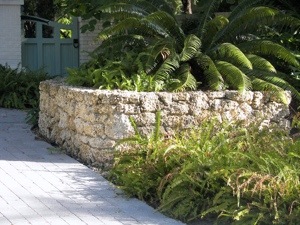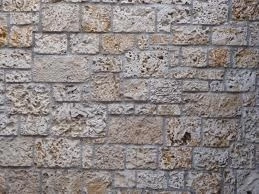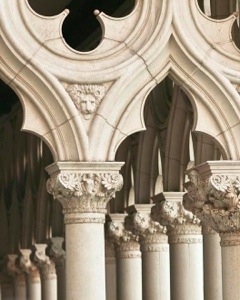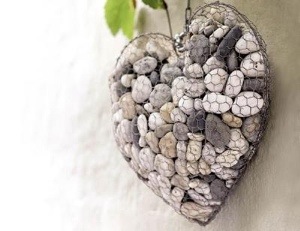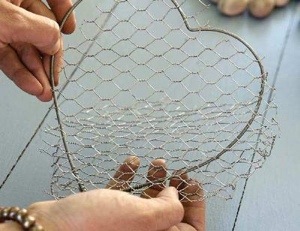It’s hard to top the $55 million price tag of a new Miami penthouse — or its extravagant floor plan.
But the home’s cantilevered glass swimming pool, which appears to dangle from its 47th floor perch above Sunny Isles Beach at the Mansions at Acqualina, is giving the penthouse itself a run for its money.
In fact, just thinking about swimming in a glass-bottom pool with this view is making us feel a little faint. (Remember the one in Shanghai? Crazy.)
But some of that may be sticker shock. Billing itself as “the world’s finest penthouse,” Acqualina’s two-story Palazzo D’Oro (Palace of Gold) comes with just about every amenity and luxury furnishing imaginable: a pivoting wall entry, private sky-garden with a living wall, a 25-foot water fall, leather walls, maple paneling with inlay, a second reflecting pool that extends into the living room, a hydrotherapy area, and beyond.
Then there’s the staggering breadth of this place: 6 bedrooms and 9 bathrooms on two floors form a 15,500-square foot home with another 5,000 square feet of terrace with both ocean and city views — there’s even a dining terrace, in case the regular dining room and standard patio furniture just aren’t enough. Not to mention a terrace that’s just for the theatre room.
Curbed Miami reports that Palazzo D’Oro is the second most expensive listing in Miami overall, second only to the former Versace mansion, Casa Casuarina.
Category Archives: stone
5th Annual FNGLA & ASLA Landscape Architect Bus Tour
Join us. If you are a landscape architect please join us at Books and Books Coral Gables at 8:00 am on 3-15-13 for the 5th Landscape Architect Annual Bus Tour. CEUs will be provided. Guava smoked chicken at Pine Island Nursery.
Tour moderated by: Gustavo Santana of AECOM, Allyson Humphries of Larry’s Cap Rock and Stone & Sylvia Gordon of Landscapes by Sylvia Gordon
More details are forthcoming. Seats are limited. RSVP to: allyson@larryscaprockandstone.com
Raymond Jungles
Raymond Jungles was just named as a new member of the stewardship council of The Cultural Landscape Foundation on December 21, 2012.
The Cultural Landscape Foundation (TCLF) is the only not-for-profit (501c3) foundation in America dedicated to increasing the public’s awareness and understanding of the importance and irreplaceable legacy of its cultural landscapes.
Through education, technical assistance, and outreach, we broaden awareness of and support for historic landscapes nationwide in hopes of saving this diverse and priceless heritage for future generations. While TCLF seeks donations to support its efforts, it is not a membership organization.
Raymond Jungles, FASLA, RLA, founded his landscape architecture firm soon after graduating with honors from the University of Florida in 1981. While attending college, he was introduced to the work of Brazilian artist and landscape architect Roberto Burle Marx, whose book Tropical Gardens of Roberto Burle Marx, opened his eyes to the poetry of landscape design.
Mr. Jungles has thirty-one years of experience in the study and practice of landscape architecture. His passion for design and broad base of knowledge informs each and every project, from concept to completion. His past projects include 1111 Lincoln Road, an award-winning urban plaza in Miami Beach, Florida, the Brazilian Garden at Naples Botanical Garden in Naples, Florida, as well as many resort and private residential gardens in Florida, Antigua, Anguilla, the Bahamas, British Virgin Islands, China, Costa Rica, Mexico, Panama and St. Kitts and Nevis.
Work by Mr. Jungles has been featured in publications such as The Wall Street Journal, The New York Times, Vanity Fair, Architectural Digest, Ocean Drive, House Beautiful, Coastal Living and Garden Design, as well as his two monographs titled Ten Landscapes and The Colors of Nature: Subtropical Gardens by Raymond Jungles. He has served on multiple design and awards juries and has won noteworthy professional recognitions including professional design awards from the Florida and National Chapters of the ASLA.
Congrats Raymond.
Unlicensed & Uninsured Not Worth Risk
Hiring a contractor who is not bonded, insured and licensed if applicable is a risk you don’t want to take.
Contractors should carry two types of insurance: liability and workman compensation. As a homeowner these protect you in 2 ways. First, liability will protect you if the contractor causes damage to your home. What if the contractor has an employee injures on your property? If he or she doesn’t have workmans compensation, there is little likelihood your homeowners policy will.
Bonding is often confused for insurance but there is a notable difference. A bond is a guarantee that the contractor will perform the work. It is secured money which will be given to the homeowner in the event the contractor failed to perform the work.
Finally you want make to sure your contractor holds the appropriate licensing if its needed. Licensing offers proof that the contractor has met certain industry training standards.
Columns
I drove by the Viceroy hotel in Miami this week and noticed the odd “Easter Island inspired” architectural columns, inspired by The Related Group’s founder and CEO Jorge Perez.
Then I fed my Pinterest addiction. I noticed David Bromstad of HGTV’s Design Star pins related to columns.
Both led me to share the following pictures. We can create almost any of these beautiful works of art in stone.
Inflation is stealing construction spending and profits.
By Larry Stewart
There’s not much talk about inflation related to the general economy, but rising costs have been eroding the construction spending much more insidiously.
Highway and bridge project costs have significantly outpaced general inflation (the Consumer Price Index) for most of the past decade, and will be up 2 to 4 percent again this year.
Alison Premo Black, chief economist with the American Road & Transportation Builders Association, says the differential is unlikely to change as the world economy recovers and drives disproportionate demand for energy, steel, cement and other construction materials.
Ken Simonson, chief economist at the Associated General Contractors forecasts construction materials costs to continue to grow between 2013 and 2017 at 3 to 8 percent rates, compared to 2- to 3-percent CPI growth. The Employment Cost Index is also expected to rise 1.5 to 2.5 percent.
Simonson forecasts bid prices will grow at 2 to 5 percent rates through 2017.
Winning bids for highway construction projects, tracked by the Federal Highway Administration’s National Highway Construction Cost Index, are rising from a late-recession dip, and have yet to regain their March 2009 levels. The producer price index for office buildings has done a little better, just regaining 2009 levels.
When you adjusted federal spending amounts for inflation, it has grown only a couple billion since 1998; perhaps not surprising given that the Highway Trust Fund has been funded at the same rate since 1993.
Inflation in construction materials costs is being driven by rising diesel prices, and intermittent sharp increases in steel, copper and gypsum-products prices.
Winning profitable contracts has never been so dependent on knowing your costs
Jerusalem Stone
With Christmas right around the corner I thought I would explore Jesus’ birthplace and the stone that is derived from Jerusalem.
Jerusalem stone (Hebrew: אבן ירושלמית, even yerushalmit) is a name applied to various types of pale limestone, dolomite and dolomitic limestone, common in and around Jerusalem that have been used in building since ancient times. One of these limestones, meleke, has been used in many of the region’s most celebrated structures, including the Western Wall.
Jerusalem stone continues to be used in construction and incorporated in Jewish ceremonial art such as menorahs and seder plates. In 2000, there were 650 stone-cutting enterprises run by Palestinians in the West Bank, producing a rich range of pink, sand, golden, and off-white bricks and tiles.
What Is Limestone?
Slate and limestone also have water in common, at least when it comes to their formation. Slate is found in the ocean; likewise, limestone is found anywhere an ancient sea existed and can even be comprised entirely of marine fossils. Limestones are sedimentary rocks that form from the layering of silt and organic matter over time. The pressure and heat from the accumulation of layers results in chemical reactions that harden the sediments into solid stone.
Sometimes limestone is purely calcite from skeletal remains of marine life, but depending upon the nature of the silt (i.e., “impurities” like clay, sand, and iron oxide that may have contributed to its formation), limestone can vary in color, from the predominant grey color of many limestones to browns, yellows, or reds. The presence of carbon in the silt can also make limestone appear blue or black. Also, depending on the methods of formation and the types of deposits that accumulated, limestone can be found in crystalline, clastic (composed of fragments), granular (like sand), or massive slabs. This makes it a highly varied stone useful for many modern applications.
Limestone is typically composed of calcium carbonate, so it is soluble in acid. When crushed, it is soluble in water. As an alkali, it is great for adjusting the pH in a garden for vegetables that prefer less acidic soil. Limestone is also used in the water industry to soften water. It is employed in dyes (it is used to make paper white) and as an additive in paint, as well as in everyday items that we put into our bodies like toothpaste and antacids as a filler. It is also found in many of our favorite foods as a preservative and as a source of calcium, an essential mineral in our diets.
More commonly known uses of limestone are as aggregate or base for roads and foundations and for purification in many industries – to purify steel, to purify molten glass, and even to purify sugar. It is essential in other kinds of manufacturing as well: brake pads and wools for clothing also utilize limestone. One of the most common uses is in the production of Portland cement, which is the most common type of cement in use around the world. Limestone is the basic ingredient for concrete, mortor, stucco, and grout.
Because limestone is found in abundance and is easier to cut in comparison to some other natural stones, as well as because it is long-lasting and resistant to weather fluctuations, it is often found in the manufacture of buildings, either as building blocks or for facades. Limestone City in Canada actually derives its name from the sheer number of buildings made from limestone there!
Limestone certainly has many faces, but it finds a spot in our hearts for its uses in indoor and outdoor, commercial and residential applications. Its muted tones, whether polished or honed, are fit for bathrooms, fireplace facings and mantles, countertops, and flooring. (Limestone is very porous, so it doesn’t turn aside stains as easily as some other natural stones; therefore, when it comes to countertops and flooring, it must be finished and sealed properly or placed in areas that are less active.) Limestone slabs and tiles are also suited for landscaping applications in patios and walkways . They are especially eye-catching when defining garden borders, as both a salute to nature and a nod to limestone’s nutritional pedigree.
DIY Christmas Gift With Stone
Forget your sleeve. Really put your heart out there. Hang it on your deck, balcony or wherever you want to share. Rock on
Step 1: Make the Outline
Step 2: Create the Shape
Step 3: Finishing Touches
TIME
One day COST
Under $25
Step 1: Make the Outline
Outline a heart shape in heavy-gauge wire. Using a pair of pliers, tie the points together with garden wire.
Step 2: Create the Shape
Place the heart shape over a double layer of chicken wire, and cut out a slightly larger heart with wire cutters. Tie the chicken wire to the wire frame with garden wire, leaving an opening through which to fill it.
Step 3: Finishing Touches
Fill the heart with pretty pebbles. (Try large, colored glass pebbles if you want to up the bling factor.) Close the opening; attach a sturdy chain and hang.
Small Business Saturday
It’s small business Saturday so I thought it would be a great opportunity to remind you that your local stone yard Larry’s Cap Rock and Stone depends on you.
We have 12 employees total. Think about that: 5 fabricators, 4 office staff, 2 truck drivers, and 1 yard foreman. We employ no subcontracted labor. Our company relies on the founder’s core principle to guide and empower our staff : Serve each client humbly, gratefully, and with knowledge.
Our small business started in 1992 when Larry began selling stone to supplement his tire business and clothe and feed his 4 kids. 2 of those 4 kids manage the company.
Pictured from Top to Bottom:
Larry’s grandfather, Joseph Bernard Albregts from Holland
Larry with his wife Sara and their three daughters (2nd in from left to right Rebecca, Rachel & Allyson)
Larry’s father Earl Eugene Albregts with daughter Allyson
Ryan Albregts, Larry’s son






